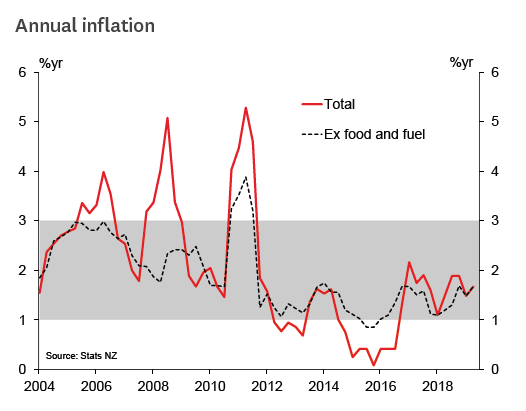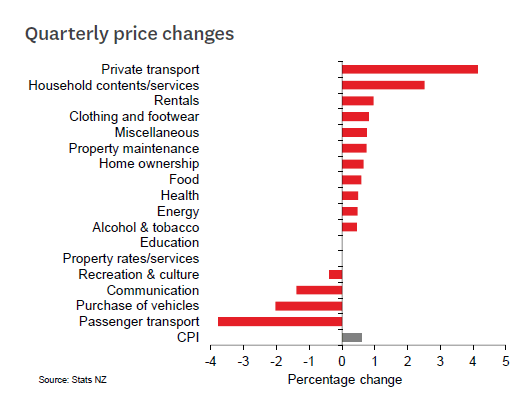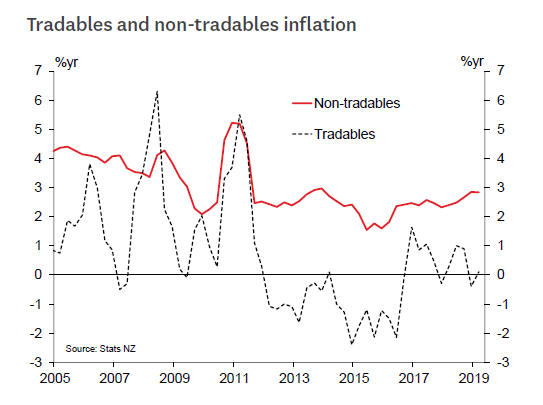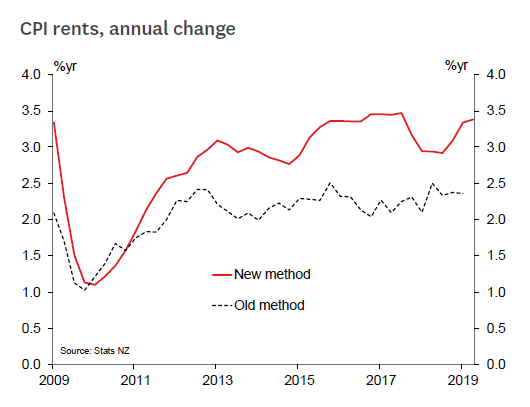CPI rose 0.6% in June quarter, annual inflation 1.7%
- The Consumer Price Index (CPI) rose by 0.6% in the June quarter, in line with forecasts.
- Fuel prices were sharply higher over the quarter, but price pressures elsewhere were subdued.
- Annual inflation remains within, but at the lower end of, the Reserve Bank’s target range.
- A further OCR cut at the August review remains likely.
There was little to take out of today’s inflation figures, with the 0.6% rise in the June quarter CPI right in line with forecasts. Almost half of the increase was due to shortterm volatility in petrol prices, which were 5.8% higher on average over the quarter. Inflation pressures elsewhere remained modest.
The annual inflation rate picked up from 1.5% to 1.7%. Some of that was again due to higher fuel prices. But the various measures of core inflation also picked up a little, with most of them within a 1.5-1.7% range. There is a consistent message coming through: inflation remains firmly within, but in the lower half of, the Reserve Bank’s 1-3% target range.
A sustained move towards the 2% midpoint of the target would require stronger economic growth from here. That hasn’t been forthcoming; in fact, the domestic economy has been slowing and the global environment has become more uncertain. The Reserve Bank had already judged that a lower OCR would likely be needed to meet its objectives, and today’s figures will do nothing to change that stance.
The details of the CPI showed that outside of fuel prices, tradables inflation remains weak, with prices little changed from a year ago. While there was a 2.5% jump in prices for household contents in the June quarter, that was largely reversing an unusually steep fall in the March quarter. Low global inflation and competitive pressures are continuing to hold down prices for imported goods.
In contrast, non-tradables inflation has picked up in the last few years, albeit gradually. Non-tradables prices rose 0.3% in the June quarter, a relatively low number resulting from seasonal declines in domestic airfares, car rentals and accommodation. The annual inflation rate held steady at 2.8%.
Notably, housing-related inflation pressures have softened in recent times as the housing market has cooled down. New dwelling prices rose by just 0.7% for the quarter, and real estate services rose by 0.5%.
Rents rose by an unusually large 1% for the quarter. However, that doesn’t represent an acceleration, but rather a change in the method used to calculate rents in the CPI. Stats NZ have provided an historic series for the new method, though they won’t be using this to backdate the CPI. The new measure tends to rise faster than the old one, and given rent’s weight in the CPI, it could add up to 0.1% to the annual inflation rate from here on.
Food prices were mixed. Fresh produce prices were subdued, but there was a notable rise in prices for eating out. The latter is likely due to the large 7.3% increase in the minimum wage in April.
The only notable surprise for us in the CPI was that airfares (both domestic and international) have continued to trend lower, despite rising fuel costs in the last couple of years. It may be that switching to newer, more fuel-efficient planes is outweighing the impact of the rise in world oil prices.

















